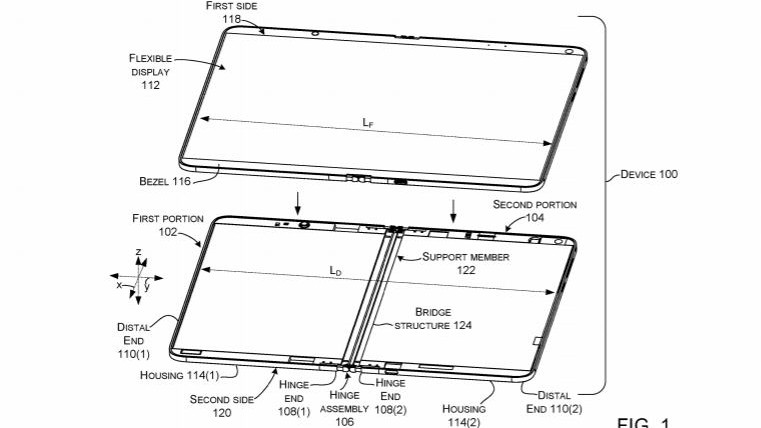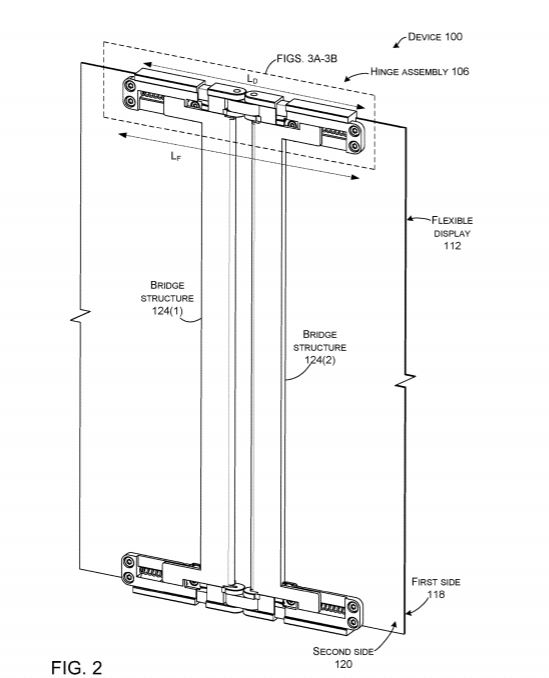Microsoft's next Surface PC could have a flexible, foldable display
The Surface Fold could be on the horizon

Microsoft is set to release its first dual-screen device, the Surface Neo, later this year. Unlike similar products we've seen so far, the Surface Neo is foldable, but not flexible.
Instead of relying on a single flexible OLED panel, Neo has two separate 9-inch LCD displays that come together via a hinge made with 60 micro co-ax cables. It's a novel approach, but one that could look antiquated compared with the likes of Lenovo's ThinkPad X1 Fold or Dell's Concept Ori.
Microsoft seems to be prepared to go the foldable display route. I say that because a new patent filing (via Windows Latest) reveals the company's plans to create a Surface product with a single flexible display.
The patent, simply titled "Hinged device," was filed Jan 28 and describes a device with a flexible screen enabled by a central hinge.
"The hinge assembly can provide several features that facilitate the use of a single flexible display across both portions," the patent reads. "During rotation of the first and second portions, the hinge assembly can change the respective length of the device that lies beneath the flexible display to reduce stresses imparted on the flexible display."

The filing goes on to propose different hinge mechanisms, such as one with a cord that connects one side of the screen to the hinge assembly and moves the screen closer and further from the hinge as the device is opened and closed. Another idea is to use a "deployable bridge support" that's controlled by a cam and operates the cord independently.
Durability is a top concern of flexible devices after Samsung botched the launch of its Galaxy Fold smartphone. Creasing on the display, debris getting into the phone and damaging the panel, and a poorly implemented protective film were some of the reasons the device was temporarily suspended and redesigned to be more durable.
Sign up to receive The Snapshot, a free special dispatch from Laptop Mag, in your inbox.
Microsoft can't afford to make the same mistakes, especially with Dell, Lenovo and other vendors embracing foldable and dual-screen laptops.
As always, patent filings rarely foreshadow the release of a product. Companies publish hundreds every year and very few see the light of day. That said, we wouldn't be surprised if this one was an exception given the energy Microsoft is putting into Windows 10X and its vision of being an OS for all form factors.
Phillip Tracy is the assistant managing editor at Laptop Mag where he reviews laptops, phones and other gadgets while covering the latest industry news. After graduating with a journalism degree from the University of Texas at Austin, Phillip became a tech reporter at the Daily Dot. There, he wrote reviews for a range of gadgets and covered everything from social media trends to cybersecurity. Prior to that, he wrote for RCR Wireless News covering 5G and IoT. When he's not tinkering with devices, you can find Phillip playing video games, reading, traveling or watching soccer.

